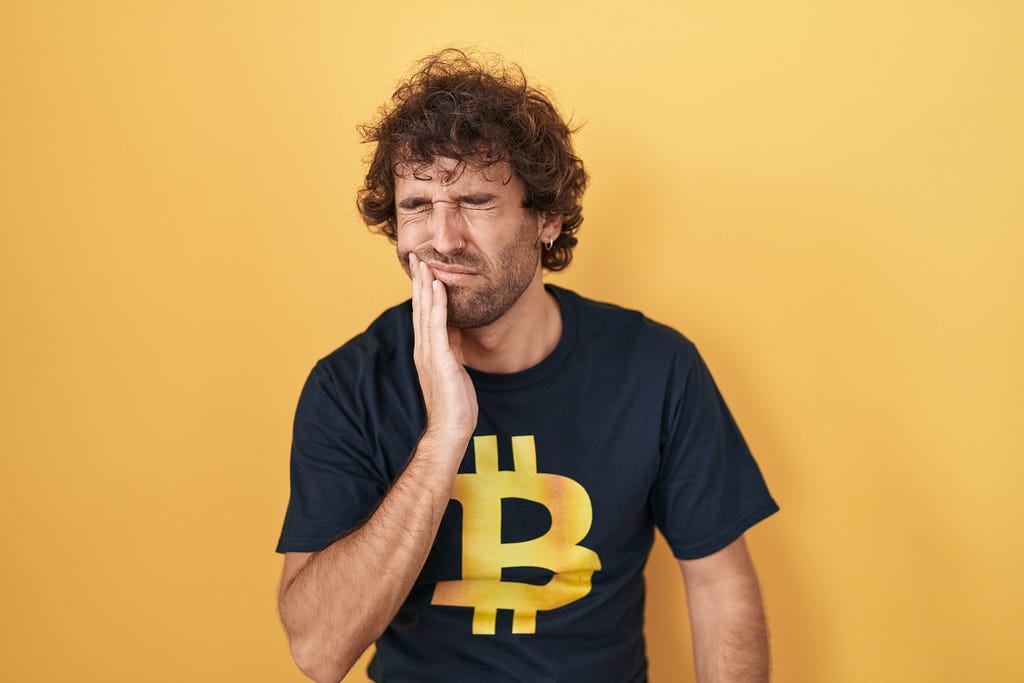An easy-to-understand explanation for everyone

This article will be a basic explanation of Bitcoin, what it is, and how it works. In order to be easy-to-understand, there will be no tech speech, and specific terms will be explained in case they are inevitable. It is clearly not about every little detail or every technical feature.
Fun fact: Bitcoin does not exist!
There is something just too funny not to mention, even though I might confuse you right from the start:
The Bitcoin does not exist.
What you get and what you own is just the receipt of a transaction because there is nothing else.
It looks a little bit like going to the ATM and just getting the receipt and no money, and indeed it is. But as you can trade your receipt in the Bitcoin world, it does not really make any difference.
Just to complete this information: What you get as the receipt of a transaction is a series of 64 letters or digits. The format is hexadecimal, so every value can be A-F or 0–9.
ABCDEF0123456789ABCDEF0123456789ABCDEF0123456789ABCDEF0123456789
These are 64 digits, for example. That is what you get. And as said, this is not “The bitcoin” but a receipt of a transaction you received.
And that’s just the transaction number! It does not contain any information about its value or even how much it is in Bitcoin. All this information is stored in
The Blockchain

The term “Blockchain” stands for a special form of a database, while the name already reveals its concept. It is a chain of blocks where the block is your above-mentioned transaction receipt of 64 digits plus additional information to make clear where it comes from, where it goes to, some verification data, etc.
In addition, this database is public, so everyone can read it. And it is decentrally stored in multiple locations.
Storing data in a “chain” is extremely slow and limited, but it promises to be completely transparent and unchangeable.
Conventional databases, in contrast, are very fast and powerful, and we are using them every day. For our bank account, our data on social media, our address book, email account, online shopping, or in more complex versions for the data of public administration or private corporations.
The whole crux of the matter lies in mistrusting the operator of conventional databases. While in daily life, we hardly ever experience any unauthorized manipulation of conventional databases… it could potentially happen.
It would be of no issue to make conventional databases even more difficult to manipulate and, for sure, even impossible to manipulate. But there is another thing: A conventional database is usually owned by an entity that operates as an intermediate in every operation. This comes with control, and it comes with fees.
Here, the promise of the Blockchain is to be immune from any manipulation and free of control and fees from any intermediate.
And yet, in reality, the vast majority of people who hold and trade Bitcoin do rely on intermediates that provide a wallet to store the coins and an exchange to trade it. Both are not mandatory, but they are rarely avoided.
With or without intermediate, also Bitcoin transaction comes with a fee, even if it used to be lower compared to fees, especially for international money transfers.
Public key and private key
Last but not least, you have a public key, which is the equivalent of your “bank account number,” and a private key, which is the equivalent of your “PIN.”
In a nutshell
When someone “has Bitcoin,” what he has is a 64-digit alphanumeric transaction receipt that does not contain any information.
The information about how much of a Bitcoin that is, where it came from, and where it went to is stored in a decentral database, where every one of these transactions is “chained” to the previous one and can not be changed.
To store Bitcoin, or better to say, the latest to transfer or trade it, you need to store it in a wallet made for that purpose.
Why is Bitcoin so expensive?
The price of a Bitcoin you see on the internet means that just some moments ago, someone paid that much for it.
Everything is based on the expectation that in the next moment, the next day, or month, there will be someone, too, to pay a similar or higher amount of money for a Bitcoin.
If enough people think the value of a Bitcoin is higher, it will certainly be the case. If the majority starts to think that Bitcoin is worth less, it will lose value.
That’s basically everything to say about the value.
One argument is that Bitcoin will rise in value because it is rare. But there are rare things on earth worth nothing, too;-)
Bitcoin is not anonymous
A common misconception is the presumed anonymity of Bitcoin transactions as an untraceable currency for the darknet and all kinds of illegal payments.
The opposite is the case.
As you saw above, every transaction not only shows exactly where the Bitcoin came from and where it goes. The great promise of Bitcoin, in addition, is that it is public and traceable for everyone and that it can never be changed.
The Blockchain database, of course, does not reveal clear names, addresses, and phone numbers of the involved parties. But be sure: Those who need to know that in case of dubious transactions have that data, too.
They probably also know whether you were picking your nose during the transaction.
What is Bitcoin? was originally published in The Capital on Medium, where people are continuing the conversation by highlighting and responding to this story.
from The Capital - Medium https://ift.tt/xWdX1Uv

0 Comments